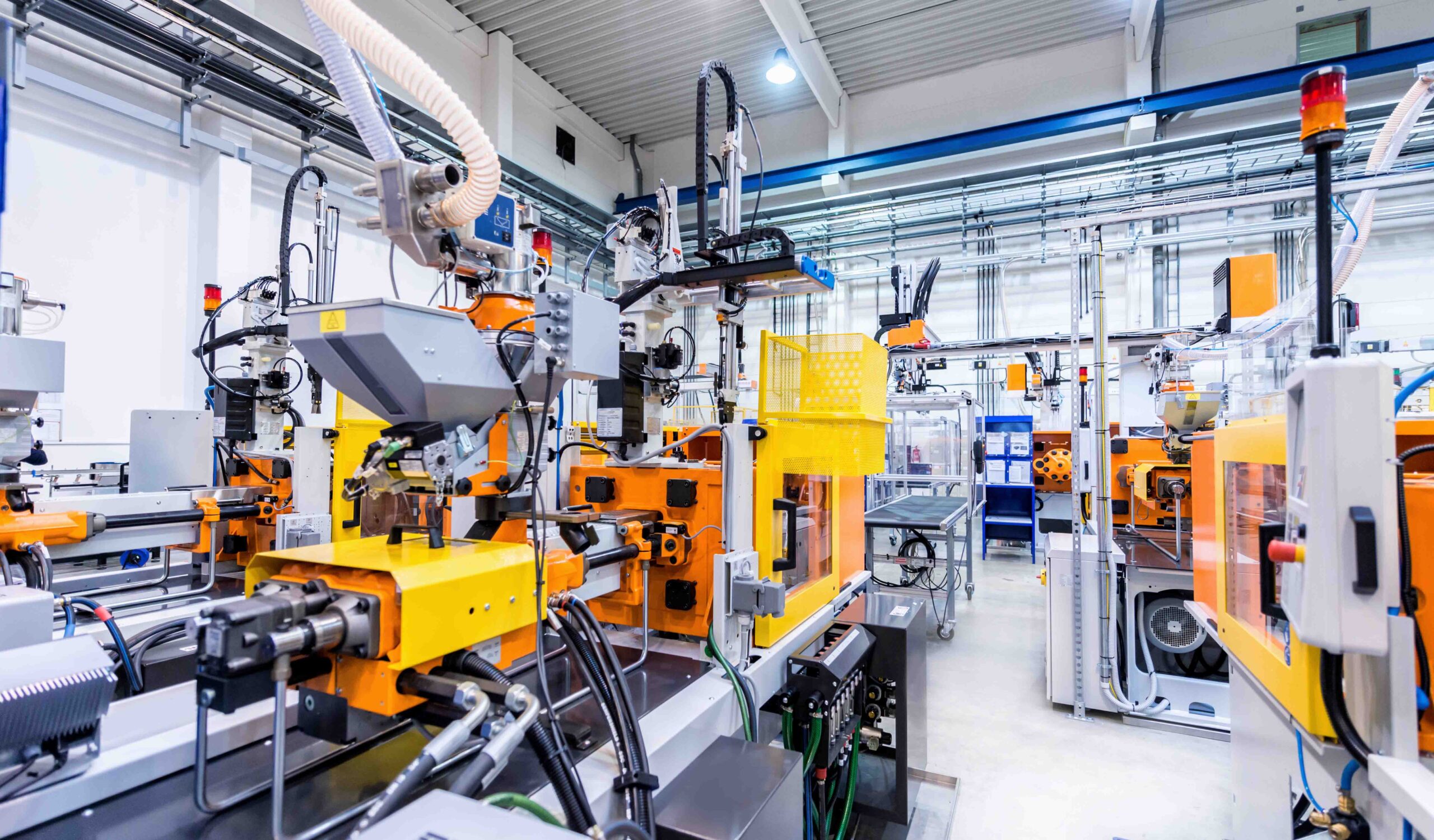Machine Guarding Assessment: Protecting Employees and Boosting Productivity in Indian Manufacturing

A Closer Look at the Indian Standard Requirements for Electrical Safety Audits: Key Considerations for Safe Operation of Businesses
October 23, 2023
Fire Safety Audit: Ensuring Compliance and Preventing Catastrophes in Indian Industries
October 26, 2023In this article, we delve into a critical aspect of the Indian manufacturing industry – machine guarding assessment. As the country’s manufacturing sector experiences significant growth, ensuring the safety of employees becomes paramount. We explore the importance of implementing robust machine-guarding measures in factories and workshops, aiming to protect workers from potential hazards and accidents. Additionally, we shed light on how prioritizing employee safety translates to improved productivity and overall business success. Stay tuned to discover key insights, practical tips, and the promise of a safer and more efficient work environment. Protect your employees while boosting productivity – a win-win situation awaits!
Introduction
Machine Guarding Assessment: Protecting Employees and Boosting Productivity in Indian Manufacturing. With the rapid growth of the manufacturing sector in India, ensuring workplace safety has become a paramount concern. Amongst the myriad of hazards that workers face on a daily basis, machine-related accidents pose a significant risk to both life and livelihood. Machinery, while essential for production, can also be incredibly dangerous if not properly guarded.
In this enlightening article, we dive into the world of machine guarding assessment within the context of Indian manufacturing. We will explore the importance of safeguarding employees from potential hazards while simultaneously enhancing productivity. Furthermore, we will outline legal requirements, step-by-step procedures for conducting assessments, and discuss best practices for implementing effective machine guarding solutions
The Importance of Machine Guarding in Indian Manufacturing
The Importance of Machine Guarding in Indian Manufacturing: In the bustling world of Indian manufacturing, where productivity often takes centre stage, it is imperative to recognize the critical role that machine guarding plays in ensuring the safety and well-being of employees. Machine guarding refers to the practice of implementing physical barriers, safety devices, and protocols to protect workers from hazardous machinery. It serves as a shield against potential accidents, injuries, and even fatalities that can arise from contact with moving parts, sharp edges, or rotating equipment.
Machine guarding is not just a legal obligation but also a moral imperative for businesses operating in India’s manufacturing sector. By prioritizing the safety of their workforce through effective machine guarding measures, companies demonstrate their commitment to employee welfare and establish a culture that values human life above all else. Moreover, adherence to stringent safety standards not only mitigates legal liabilities but also enhances the reputation and credibility of organizations within the industry.
However, beyond mere compliance and risk mitigation lies an opportunity for businesses to redefine their approach towards workplace safety. Viewing machine guarding as an investment rather than an expense can bring about a paradigm shift in how both employers and employees perceive occupational hazards. By fostering an environment where workers feel protected and valued, companies can unlock hidden potential within their workforce – leading to increased productivity, higher employee morale, and ultimately sustainable growth for the entire organization.
So let us embark on a journey through the realm of machine guarding assessment in Indian manufacturing – exploring its intricacies, best practices, success stories – with the aim of safeguarding not only physical well-being but also nurturing a thriving culture where people’s lives truly matter.
Understanding Machine Hazards in Manufacturing Processes
Machine hazards in manufacturing processes present significant risks to the safety and well-being of employees. Understanding these hazards is crucial for implementing effective machine guarding measures. One common hazard is mechanical hazards, which include rotating parts, moving belts, and gears that can cause entanglement or crushing injuries. Another hazard is electrical hazards, such as faulty wiring or exposed electrical components that can lead to shock or electrocution. Chemical hazards are also prevalent in manufacturing processes, with substances like solvents, acids, and cleaning agents posing risks of burns, respiratory issues, or skin irritations if not handled properly. Additionally, thermal hazards arise from high temperatures generated by machinery or materials involved in the manufacturing process.
Furthermore, ergonomic hazards should be considered when assessing machine guarding needs. Poorly designed workstations can result in musculoskeletal disorders due to repetitive motions or awkward postures. Vibrations from machinery also contribute to long-term health issues.
Understanding these various machine hazards allows manufacturers to identify specific risks associated with their processes and take appropriate measures to mitigate them. By implementing comprehensive machine guarding strategies tailored to their unique needs, manufacturers can protect their employees while fostering an environment of productivity and success.
Legal Requirements for Machine Guarding in India
In the realm of Indian manufacturing, ensuring the safety and well-being of employees is not just a moral obligation but also a legal imperative. The legal framework surrounding machine guarding in India is comprehensive and stringent, designed to protect workers from potential hazards in the workplace. Under the Factories Act, 1948, employers have a legal duty to provide adequate safeguards for machines to prevent accidents. Section 21 of the Act specifically mandates that all machinery must be securely fenced or guarded to prevent access to dangerous parts. The legislation outlines specific requirements for different types of machinery based on their potential risks. It covers aspects such as barrier guards, interlocks, trip devices, and emergency stops.
Additionally, standards set by organizations like the Bureau of Indian Standards (BIS) offer guidelines for machine guarding design and implementation. These standards ensure that employers adhere to best practices and industry benchmarks when it comes to safeguarding their employees.
By strictly adhering to these legal requirements and standards, manufacturers can create a culture of safety within their facilities while fostering an environment that promotes productivity and innovation. Compliance with machine guarding regulations not only protects individuals from harm but also inspires confidence among workers, leading to increased job satisfaction and overall operational efficiency.
Conducting a Machine Guarding Assessment: Step-by-Step Guide
Conducting a Machine Guarding Assessment: Step-by-Step Guide First, begin by assembling a team comprising of safety professionals, engineers, and employees who are well-versed in the manufacturing processes. Their diverse expertise will ensure a comprehensive assessment.
Next, conduct a thorough analysis of each machine and its surrounding work area. Take detailed notes on potential hazards such as moving parts, pinch points, or exposed electrical components. Consider the specific tasks performed on each machine to identify any additional risks.
Once potential hazards have been identified, prioritize them based on severity and likelihood of occurrence. This will help allocate resources effectively to address the most critical issues first.
Creative Content: Imagine the empowerment that comes from systematically addressing machine guarding concerns! By applying this step-by-step approach, you can transform your workplace into a safe haven where employees can work confidently and productively. Remember, every machine guarding assessment is an opportunity for growth and protection!
Identifying Potential Hazards and Risks in the Workplace
The process of identifying potential hazards and risks in the workplace is an essential step in ensuring the safety of employees in the Indian manufacturing industry. With a keen eye for detail, diligent observation, and thorough analysis, one can uncover hidden dangers that may compromise worker well-being. By meticulously inspecting machinery, equipment, and workstations, it becomes possible to identify potential threats such as exposed moving parts, sharp edges, electrical hazards, or inadequate ventilation. Delving deeper into this topic reveals an alarming reality: countless accidents occur due to overlooked hazards. However, this knowledge should not discourage us; rather it should motivate us to take proactive measures to mitigate these risks. When we identify potential hazards and risks within the workplace environment, we pave the way for implementing effective machine guarding solutions that address each specific concern. By doing so, we create a safer working environment where employees can confidently carry out their tasks without fear of injury or harm. Ultimately, this not only promotes employee well-being but also contributes to higher productivity levels and overall success within the Indian manufacturing industry
Implementing Effective Machine Guarding Solutions
Implementing Effective Machine Guarding Solutions: When it comes to ensuring the safety of employees in Indian manufacturing, implementing effective machine guarding solutions is of utmost importance. Employers must carefully consider the specific hazards present in their workplace and choose appropriate guarding measures accordingly. This involves a meticulous evaluation of machinery and equipment, identifying potential points of danger, and implementing safeguarding measures that eliminate or minimize risks.
One effective solution is the installation of physical barriers such as fixed or adjustable guards, interlocked systems, and presence-sensing devices. These safeguards create a physical barrier between employees and hazardous machine parts, preventing accidental contact and reducing the chances of injury. Additionally, advanced technologies like light curtains and pressure-sensitive mats provide real-time detection capabilities that instantly halt machine operations when an employee is within dangerous proximity.
By integrating these robust machine guarding solutions into their manufacturing processes, employers not only prioritize employee safety but also experience an upswing in productivity. When workers feel secure in their environment, they can focus on their tasks without fear or distraction. Reduced accidents and injuries lead to fewer work disruptions and lower downtime, ultimately resulting in improved efficiency and increased output.
Remember: Safety should never be compromised for the sake of productivity; rather it should be seen as a catalyst for achieving optimal performance while fostering a positive work culture where every employee feels valued and protected.
Training and Educating Employees on Machine Guarding
Training and Educating Employees on Machine Guarding: Ensuring the safety of employees in the manufacturing industry requires a comprehensive training program on machine guarding. By empowering workers with knowledge and awareness, they can actively contribute to their own safety as well as that of their colleagues. The training should encompass both theoretical and practical aspects, providing a deep understanding of machine hazards, identification techniques, and proper use of protective measures.
An effective training session begins by explaining the importance of machine guarding in preventing accidents and injuries. Through vivid examples and real-life case studies, employees gain a clear understanding of the potential risks associated with improper machine operation. Emphasizing the benefits of proper machine guarding not only motivates employees but also instills a sense of responsibility toward safety protocols.
Theoretical knowledge should be complemented by hands-on training exercises where employees learn how to correctly operate machines while following safety guidelines. Practical sessions help familiarize workers with various types of guards, lockout/tagout procedures, emergency shutdown protocols, and safe work practices. Furthermore, interactive workshops enable employees to actively participate in discussions, ask questions, and share personal experiences regarding machine-related incidents or near misses. This participatory approach fosters a culture of continuous learning and promotes shared responsibility for workplace safety
Regular Inspection and Maintenance for Ensuring Safety
Regular Inspection and Maintenance for Ensuring Safety: Once machine guarding measures are in place, regular inspection and maintenance become crucial for ensuring a safe working environment. Scheduled inspections should be conducted to identify any potential wear and tear or damage to the machine guarding systems. Trained personnel should thoroughly examine each component, paying close attention to hinges, locks, interlocks, and other mechanisms. Additionally, they should check for signs of corrosion, loose fittings, or any other factors that could compromise the effectiveness of the guards.
Maintenance activities should include lubrication of moving parts, tightening of bolts and screws to maintain structural integrity, as well as replacement of damaged or worn-out components. It is essential that a detailed maintenance log is kept for each machine and regularly reviewed by management. This not only serves as a record but also provides valuable insights into patterns or recurring issues that may require specific attention.
By adopting a proactive approach towards regular inspection and maintenance of machine guarding systems, companies can significantly reduce the risk of accidents while preserving productivity levels. A well-maintained workplace instills confidence in employees and fosters an atmosphere where safety is prioritized without compromising operational efficiency. Remember, investing time and resources into upkeep today means safeguarding tomorrow’s success.
Benefits of Proper Machine Guarding: Protecting Employees and Boosting Productivity
Machine Guarding is not only a legal requirement but also an essential practice that plays a crucial role in protecting employees and boosting productivity in the realm of Indian manufacturing. By ensuring that machines are properly guarded, the risk of accidents and injuries can be significantly reduced, creating a safe and secure working environment for workers. The benefits of proper machine guarding extend beyond employee safety; they also have a positive impact on overall productivity. When employees feel safe and protected in their workplace, it cultivates an atmosphere of trust, confidence, and morale. This leads to increased job satisfaction, engagement, and ultimately higher productivity levels. Workers are more likely to focus on their tasks without fear or distraction when they know that their well-being is being prioritized through effective machine guarding measures.
Moreover, by preventing accidents and injuries through proper machine guarding practices, organizations can avoid costly downtime caused by accidents or legal obligations. By investing time and resources into implementing comprehensive guard systems, businesses can safeguard their operations against potential disruptions while simultaneously demonstrating their commitment to employee welfare.
In summary, the benefits of proper machine guarding in Indian manufacturing are two-fold: it protects employees from potential risks and ensures a productive working environment. When companies prioritize safety through comprehensive guard systems, they not only reduce the chances of accidents but also foster a culture of trust and well-being among workers — leading to increased efficiency in operations while projecting themselves as socially responsible entities within the industry.
Case Studies: Successful Implementation of Machine Guarding in Indian Manufacturing
Sitting amidst the bustling industrial landscape of India, there are numerous success stories that highlight the importance of implementing effective machine guarding practices. One such case revolves around a prominent automobile manufacturing plant in Mumbai. Recognizing the need to enhance workplace safety, the plant took proactive measures to evaluate and address potential hazards. Through a comprehensive machine guarding assessment, they identified critical areas requiring immediate attention. By installing robust physical barriers, interlocking systems, and safety sensors, the plant significantly minimized employee exposure to hazards. This not only ensured their well-being but also boosted productivity. With reduced risks of accidents and injuries, workers gained confidence and peace of mind. The positive impact was palpable as absenteeism declined, and job satisfaction soared. Additionally, this success story inspired similar actions across other manufacturing units in India.
Another noteworthy example comes from a textile mill in Coimbatore that prioritized employee safety through systematic machine guarding implementation. By meticulously assessing their machinery and identifying potential risks, they were able to implement customized solutions for each production area. From installing emergency stop buttons within reach to using light curtains for instant detection of personnel presence near hazardous equipment, every measure was taken to safeguard employees.
The positive outcomes were remarkable as industrial accidents reduced significantly over time. Workers felt cared for and appreciated by their employer’s commitment towards their well-being. This led to increased employee morale and productivity levels that exceeded expectations – a win-win situation for both workers and the organization.
These case studies exemplify how successful implementation of machine guarding can revolutionize workplace safety standards while fostering an environment where employees thrive. By investing in comprehensive assessments, tailored solutions, regular maintenance checks, and continuous training programs, Indian manufacturing industry can create a future where accidents become rare occurrences rather than unfortunate realities.
Machine Guarding Technologies and Innovations
Machine Guarding Technologies and Innovations: The ever-evolving landscape of technology has brought forth a myriad of advancements in the realm of machine guarding, revolutionizing manufacturing safety in India. Cutting-edge sensors and automation systems have emerged as formidable allies in the ongoing battle against workplace hazards. Intelligent guard monitoring systems, equipped with state-of-the-art optical sensors, are capable of detecting even the slightest breach in machine enclosures. These systems not only ensure immediate shut-off when unauthorized access is detected but also provide real-time alerts to operators, empowering them to take swift action.
Additionally, innovative developments such as light curtains have paved the way for safer work environments by replacing traditional physical barriers with non-contact, infrared sensing devices. These curtains emit a series of invisible beams that instantly trigger machine shutdown upon disruption. This ground-breaking technology not only offers enhanced protection against risks but also enhances productivity by eliminating the need for constant manual intervention.
Furthermore, advancements in robotics have enabled the integration of collaborative robots (cobots) into manufacturing processes. Cobots possess built-in safety features that automatically halt their movements when they come into contact with humans or other objects, minimizing the risk of accidents and injuries. This exciting development not only ensures employee safety but also opens up new avenues for efficient collaboration between humans and machines.
Embracing these cutting-edge technologies and innovations recalibrates manufacturing practices in India towards a future where employee well-being takes center stage without compromising productivity. By continuously pushing boundaries and investing in research and development, manufacturers can create an environment where individuals can flourish alongside advanced machinery – a harmonious synergy that uplifts both employees’ spirits and overall industry performance.
Conclusion
In the realm of Indian manufacturing, where worker safety and productivity go hand in hand, machine guarding assessment emerges as a paramount practice. By diligently identifying and mitigating potential hazards in the workplace, organizations not only ensure the well-being of their employees but also create an environment conducive to higher productivity and efficiency. The implementation of effective machine guarding solutions, coupled with regular training, inspection, and maintenance, forms a solid foundation for a safe and thriving manufacturing industry. As we strive towards a future where every worker is protected from harm’s way, let us embrace the power of machine-guarding assessment as a catalyst for progress and prosperity in Indian manufacturing.




